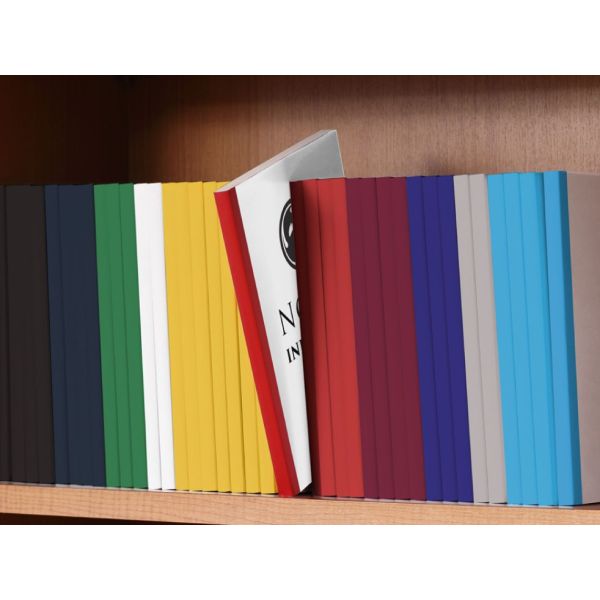Ring binders aka Loose Leaf Binders are a staple of school lockers, office shelves and conference tables. But do you know the difference between the options? Here are the basics of binder rings:
Rings
Binder rings come in three basic types: Round or O-rings, D-rings and Slant-D Rings. The size of a Round ring is the measurement of its inner radius while the size of a D and Slant-D ring lets you know how long the straight part is.
The size of the rings determines how much paper a binder will hold. The spine might say 3.5” inches, but that’s just an indication of how much space it’s going to take up on your shelf. When it comes to capacity, it’s the size of the ring that matters. If the ring is 1”, it’s going to hold about 60 pages. D-rings have a slightly greater capacity than Round rings. So you might get an extra ten pages into a 1” D-ring. Slant-D Rings are used once you get to the bigger sizes like 3”, 4” and 5”. The Slant allows you to fit even more pages then with a standard D-ring.
Ring binder mechanisms are primarily designed to hold different sized paper. Three-ring binders usually hold letter or legal sized documents. Two-ring binders in North America are used most commonly for top-binding (hanging documents from the short side of the paper). Six-ring mechanisms cluster 3 rings at the top and bottom of the metal bar to hold memo-sized paper (6”x4”).
Placement
The ring binder mechanism can be placed on the spine or on the back cover adjacent to the spine. Two-ring mechanisms for top-binding are affixed to the top edge of the back cover. Round rings tend to be attached to the spine (although they can also be attached to the back cover depending on your preference), while D and Slant-D rings are secured to the back cover.
The reason for the different placement is mostly a question of functionality. D-rings mounted on the back cover allow the paper to stay flat when the binder is opened, keeping the contents looking more organized and aligned. This type of mounting also reduces the wear and tear on individual pages, making them less likely to break away.
Binder Rivets
The binder mechanism is affixed to the outside of the binder (also known as a binder flat) with binder rivets. They can be made from a soft aluminum alloy, nickel, steel, or Monel (a nickel-copper alloy). Rivets are often powder-coated to match most coloured ring mechanisms.
Binder Triggers
Triggers are those tab like pieces of metal that stick up from the binder ring on the top and bottom. The purpose of these triggers are to keep your binder rings locked in position so that they don’t open unexpectedly. Larger metals require the triggers because the more paper you put in the binder ring, the more weight it has to carry. Whereas the smaller sizes have triggers as an option since they are much less likely to open up without you purposely pulling on them. They also make it easier to open and close the metals to insert pages.
Multiple-Uses
While ring binder mechanisms are most often used on binders, they also have a number of other useful applications. Binder rings can also be sold separately without the metal spine attached. These are called Loose Leaf Rings. These individual rings can be used to hold fabric for swatch books, flash cards, keys, paper and much more.
Find your own uses for binder ring mechanisms, whether you simply want to keep your documents safe or have a creative idea for making the most of these versatile rings.




